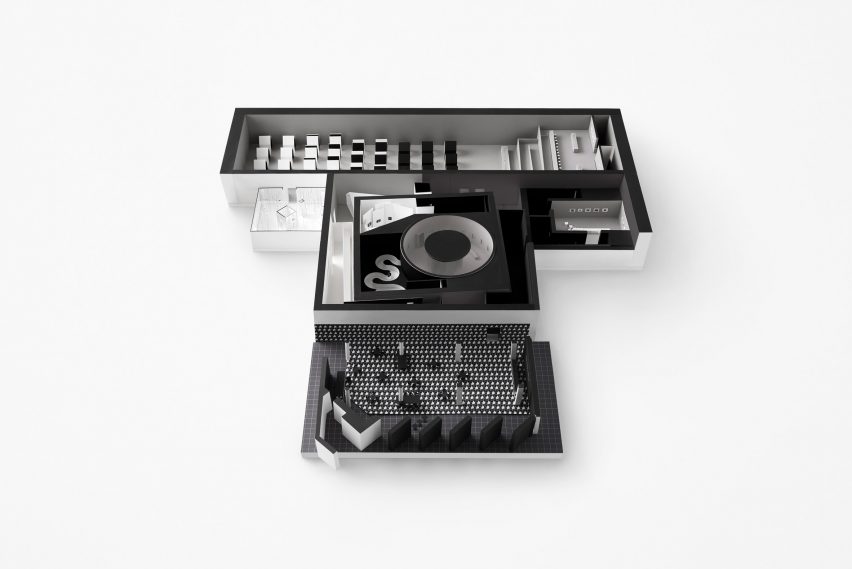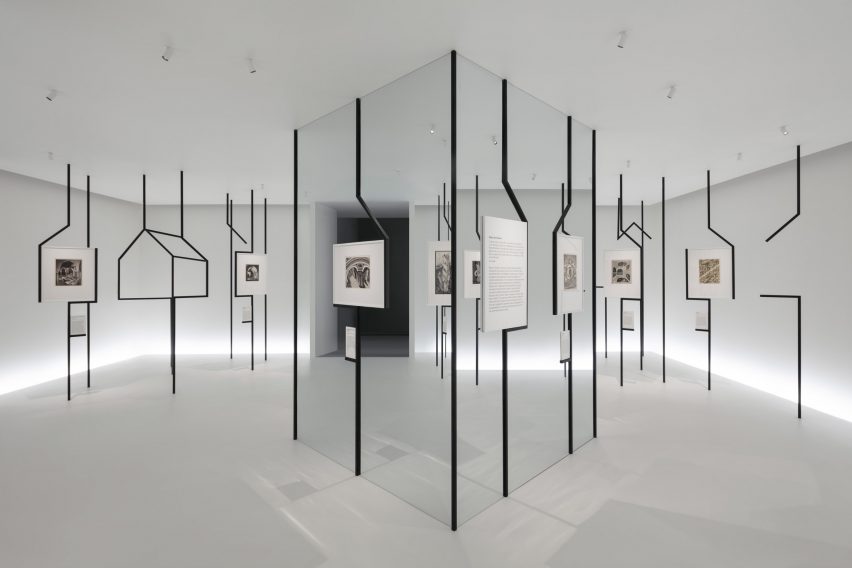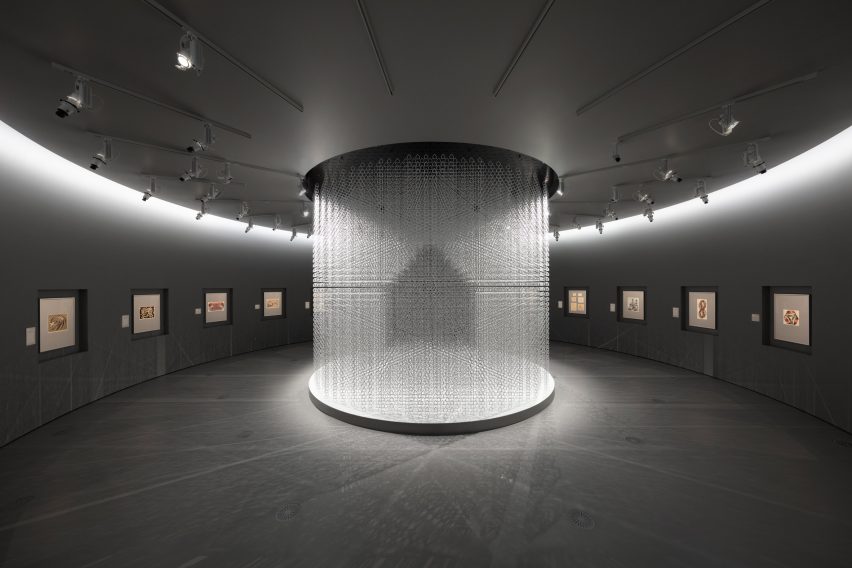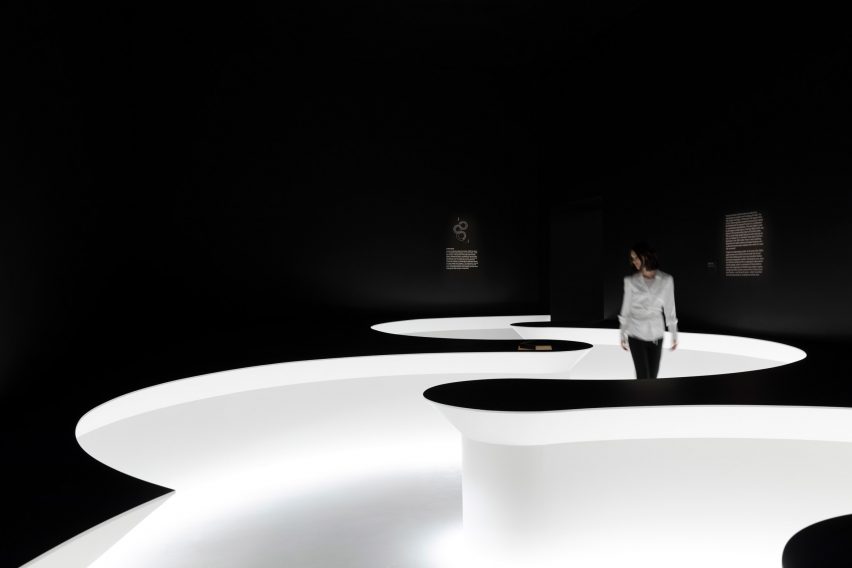Escher's work lies "between the impossible and the possible" says Nendo's Oki Sato
The work of Dutch graphic artist MC Escher has influenced all designers, says Oki Sato in this exclusive video produced by Dezeen.
Sato and his design studio Nendo was commissioned by the National Gallery of Victoria in Melbourne, Australia to design an exhibition Escher's work which opened last month.
Sato told Dezeen that the main theme of Escher's work is about the middle ground "between the possible and the impossible".

"That is the true value of design," said Sato.
"I think that gives a lot of influence to all designers including myself."
Entitled Between Two Worlds, the exhibition features 157 prints and drawings by Escher made between 1916 and 1969, and borrowed from the largest collection of Escher's work at the Gemeentemuseum in The Hague.

Nendo designed the immersive exhibition drawing on the impossible geometries and optical illusions present in Escher's work.
"Usually an exhibition designer is designing a stage for the artwork," said Sato.
"This time I had to design the stage and I had to be on the stage as well."

Escher is known for playing with the perception of three-dimensional objects in a two-dimensional format.
"Escher creates two-dimensional things, which are inspired by the three-dimensional and we tried to do the opposite," he said. "We tried to make three dimensional things, inspired by the two-dimensional."
A variety of monochrome objects are found throughout the exhibition, using a house shaped icon which draws on themes of geometry and space present in Escher's work.

"We thought that this very simple house shaped object would become the icon of the exhibition," said Sato.
"It represents space itself. It represents the house of Escher in a way."

The objects include seating made from interlocking houses and a chandelier made from 55,000 small houses-shaped cut outs.
The studio created installations that act as optical illusions for visitors, such as a grid made up of a row of four house-shaped sculptures whose roofs open gradually to reveal a fifth house at the back of the room. There is also a room full of suspended angular black pipes that carry Escher's works, and form the outline of a house when seen from certain angles.
Nendo also created a snaking white path cutting through a pitch black room, where Escher's work Snakes from 1969 is exhibited.
The exhibition is open until 7 April 2019 at the National Gallery of Victoria in Melbourne, Australia.